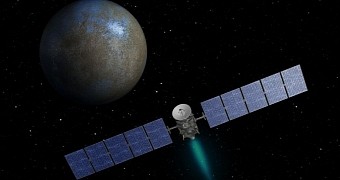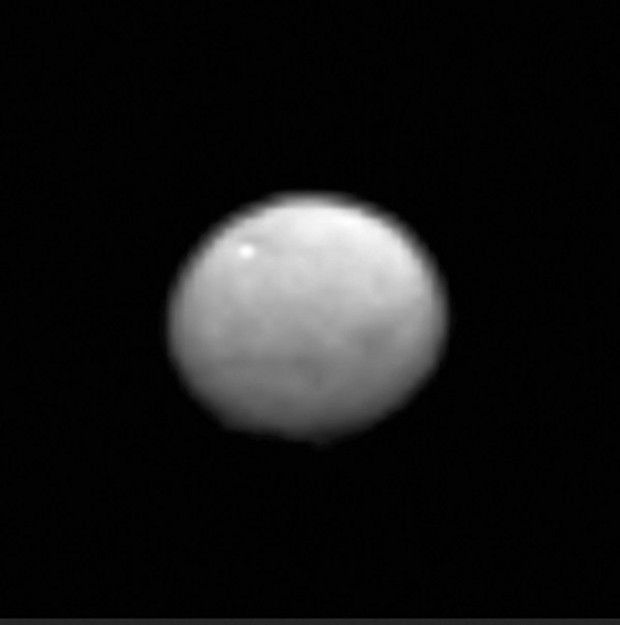Just a few weeks back, NASA proudly announced that its Dawn spacecraft was nearing Ceres, a so-called dwarf planet circling the Sun between the orbits of Mars and Jupiter. As it turns out, the spacecraft has since come close enough to Ceres to study and snap images of its surface.
Of the Ceres portraits that NASA's Dawn spacecraft has until now obtained, one was released to the public this past Monday. Don't fret, the image in question is available below.
Not exactly the coolest space image ever
Before anyone asks, no, there is nothing wrong with your monitor or with your eyes, for that matter. That's how NASA's Dawn spacecraft delivered this image: all blurry and totally unflattering for Ceres.
In fact, the image kind of makes the dwarf planet look like an egg emerging from some sort of weird cloud of cosmic mist. Then again, the spacecraft was at a distance of 238,000 miles (383,000 kilometers) from Ceres when the picture was taken, so all blurriness is forgiven.
In a statement, scientists with NASA detail that the image was obtained this past January 13 and shows the dwarf planet at 27 pixels across. Although not that clear, the picture hints at the presence of craters on this distant celestial body.
Astronomers promise that, as it nears Ceres, the Dawn spacecraft will obtain even clearer images on it. In fact, they expect that we will get to have a closer and more detailed look at this dwarf planet before the month is over.
The ins and outs of NASA's Ceres mission
The Dawn spacecraft left Earth quite a while ago, on September 27, 2007. The probe was launched from the Space Launch Complex 17B at the Cape Canaveral Air Force Station in Florida, US.
Dawn has since completed a flyby of Mars and spent about 14 months studying the protoplanet Vesta. The probe is now journeying through space at a speed of about 450 miles per hour (approximately 725 kilometers per hour) and should reach Ceres on March 6.
Once it makes it all the way to the dwarf planet, the Dawn spacecraft will place itself in its orbit. Should things go as planned, the probe will study Ceres for 16 months, during which time it will move closer and closer to its surface.
“We know so much about the solar system and yet so little about dwarf planet Ceres. Now, Dawn is ready to change that,” researcher Marc Rayman with NASA's Jet Propulsion Laboratory said in a recent interview concerning this mission.
Having studied the dwarf planet Ceres with the help of NASA's Hubble Space Telescope, scientists found it to have a diameter of about 590 miles (950 kilometers). What's more, evidence indicates that the celestial body has ice included in its makeup and even hides an ocean beneath its surface.
It is expected that NASA's Dawn mission will shed new light on the dwarf planet's anatomy and map this ocean, provided that it in fact exists. “The team is very excited to examine the surface of Ceres in never-before-seen detail,” said scientist Chris Russell with the University of California, Los Angeles.

 14 DAY TRIAL //
14 DAY TRIAL // 

